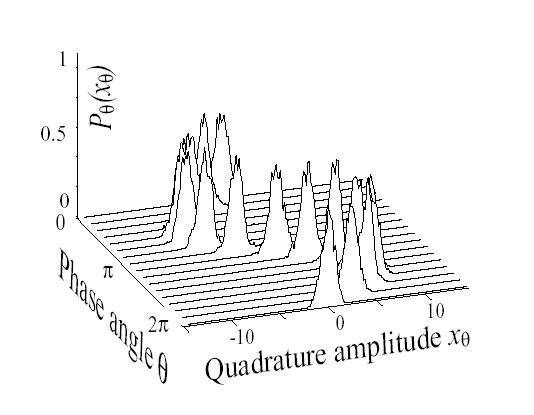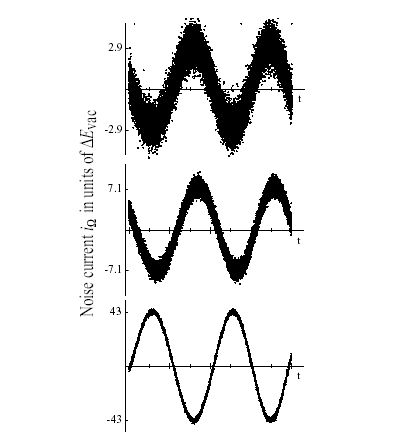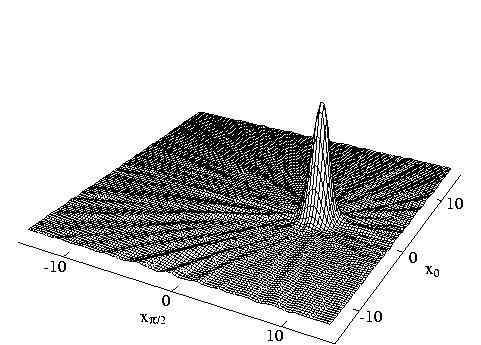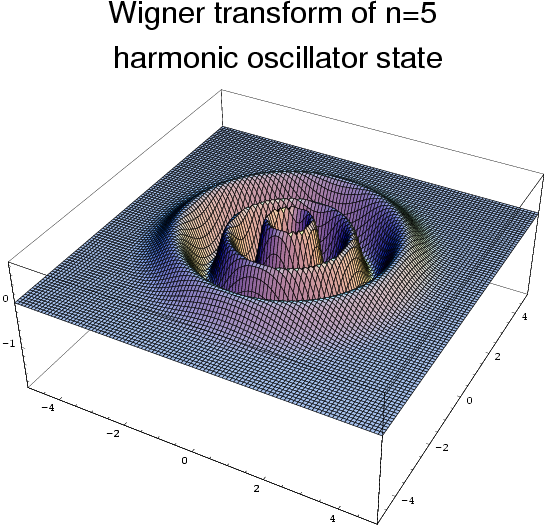Coherent states versus number (harmonic oscillator) states
(→The most wave-like state of a cavity is called a coherent state) |
(→The most wave-like state of a cavity is called a coherent state) |
||
| Line 27: | Line 27: | ||
| − | ===the Wigner | + | ===the Wigner function=== |
| + | |||
| + | Here is an experimentall determined Wigner due to [http://www.ub.uni-konstanz.de/kops/volltexte/1999/227/ Gerd Breitenbach]. | ||
[[Image:Wigner function coherent state.jpg]] | [[Image:Wigner function coherent state.jpg]] | ||
[[Image:Wigner fock.png]] | [[Image:Wigner fock.png]] | ||
Revision as of 15:01, 1 May 2006
The most wave-like state of a cavity is called a coherent state
- The harmonic oscillator states we wrote
 .
.
- We saw that hese states also arise when quantizing fields such as the electric field in a cavity and the displacement field in an elastic solid. In that case
 refers to the number of quanta in the cavity or solid (we called these photons and phonons, respectively). In that context these are also called number states or Fock states.
refers to the number of quanta in the cavity or solid (we called these photons and phonons, respectively). In that context these are also called number states or Fock states.
- A quantum state of a cavity that is like a classical state as much as possible should have the property that when you make a measurement you don't change the state. Since nearly all measurements of light involve destroying photons (e.g., by creating current or heat), these measurements should have the general form some operators
 where
where  is the destruction (lowering) operator.
is the destruction (lowering) operator.
- This means that a quantum state that is "like a classical state" (whatever that means) should be an
eigenvector of the destruction operator. Such states are called coherent states and were introduced by Roy Glauber, who was one of three people to get the Nobel Prize in Physics in 2005.
Here are two views of coherent states (both images from [1] Wikipedia):
You may recall that we showed that for the harmonic oscillator, the uncertainty in position and the uncertainty in momentum were exactly the same. The analagous result is true for coherent states. Namely the real and imaginary part of the electric field (or the x and y components) have the same uncertainy.
In the general case, in which the uncertainty is not evenly distributed between the two components of the electric field, the state is called a squeezed state.
the most unclassical states: number states
the Wigner function
Here is an experimentall determined Wigner due to Gerd Breitenbach.



